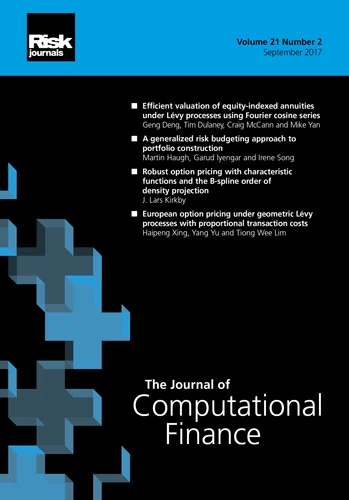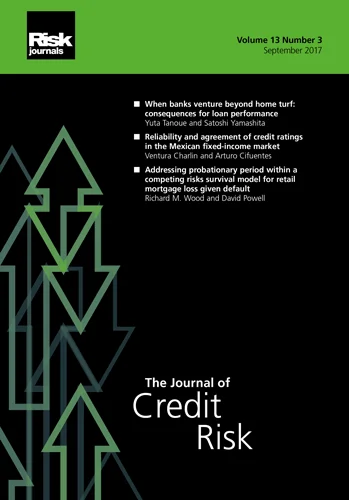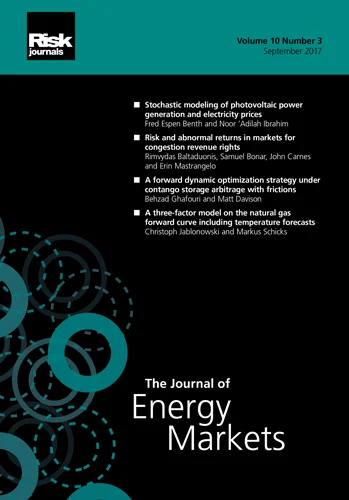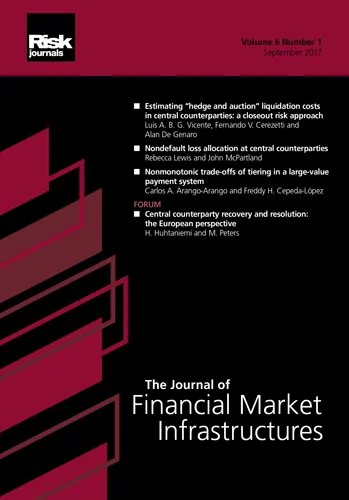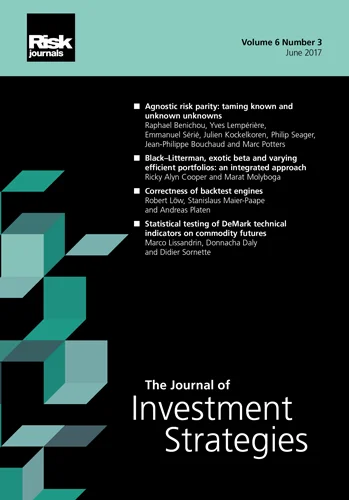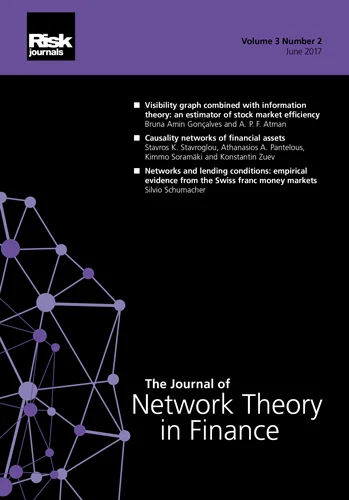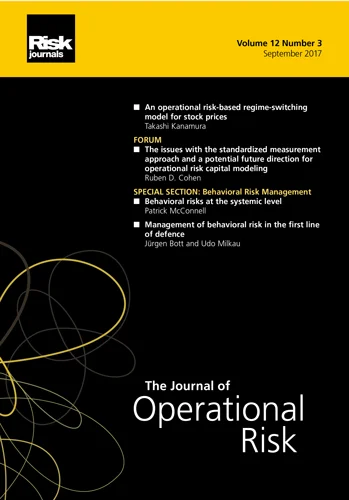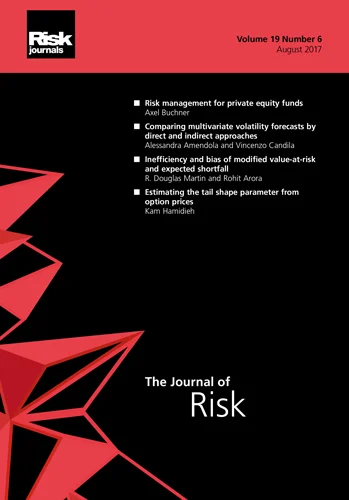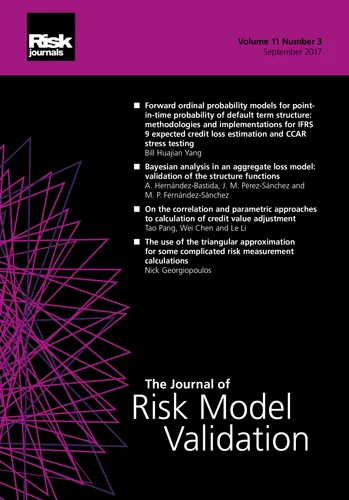Journal of Credit Risk
ISSN:
1744-6619 (print)
1755-9723 (online)
Editor-in-chief: Linda Allen and Jens Hilscher
Volume 17, Number 3 (September 2021)
Editor's Letter
Linda Allen
Baruch College, CUNY
Yildiray Yildirim
Baruch College, CUNY
As Ronald Coase famously said: “If you torture the data long enough, it will confess.” In data analysis we study to understand and find patterns using statistical techniques, while in machine learning we train a system to learn these patterns and predict future patterns without imposing any structure on the pattern. This special issue of The Journal of Credit Risk addresses the role of machine learning in credit risk analysis.
As noted in the impressive survey paper that opens the issue, “A survey of machine learning in credit risk” by Joseph L. Breeden, this is an arduous task, and we can only hope to unearth the first layer of applications and adaptations in this special issue. However, the great interest in these algorithms on the part of our readership has inspired us to begin the task. In particular, we hope that this special issue offers our readers a useful roadmap to navigate the many machine learning paths that are available to researchers and analysts. Not only do we provide two survey papers, but we also illustrate applications in three additional papers in this issue. However, it is ultimately up to you, dear reader, to decide whether these approaches are tools of analysis or tools of torture!
Breeden’s paper places machine learning algorithms in the range of linear and nonlinear statistical techniques used to extract credit risk inferences from data on lending outcomes. He distinguishes between default risk (probability of default) and loss (loss given default) target variables, as well as considering exposure at default and the probability of attrition. The internal architecture used in modeling provides a framework for the plethora of estimators and optimizers used to design machine learning models. Furthermore, Breeden compares the performance of different models. He then discusses papers that use various methodologies (eg, neural networks, support vector machines, decision trees, fuzzy methods and genetic programming) to estimate credit scoring models, corporate defaults, portfolio forecasting and stress testing. The survey closes with cautionary tales regarding the interpretability, efficacy and computational challenges associated with machine learning algorithms.
The issue’s second paper, “Review of credit risk and credit scoring models based on computing paradigms in financial institutions” by Deepika Sharma, Ashutosh Vashishtha and Manoj Kumar Gupta, focuses only on credit scoring models. This concise paper cites additional sources for researchers and practitioners in tabular form for easy reference, sorted by evaluation and computing paradigm. Thus, readers interested in a specific credit scoring model can easily find references that illustrate each approach. Further, the survey provides a comparison of the pros and cons of six major machine learning techniques with regard to expected response time, the threshold of input data, the accuracy of output, reliability and computational overhead.
Machine learning applications to the areas of credit scoring, recovery forecasting and stress testing are illustrated in the remaining three papers in this special issue. Our third paper, “Ensemble methods for credit scoring of Chinese peer-topeer loans” by Wei Cao, Yun He, Wenjun Wang, Weidong Zhu and Yves Demazeau, applies ensemble methods to the problem of scoring default risk using 33 966 peerto-peer loans originated on China’s Renren lending platform during the period 2013– 16. Six classifier ensembles (the bagging, boosting, random subspace, rotation forest, random forest and gradient boosting decision tree methodologies) are described, and their credit scoring accuracy is compared. Both F -measure and type I error tests suggest that the gradient boosting decision tree, random forest and rotation forest methods outperform the other ensembles, with statistically significant improvements in performance. Results are validated on another sample of loans originated between January 2017 and June 2019.
In “Forecasting consumer credit recovery failure: classification approaches”, the fourth paper in the issue, Hyeongjun Kim, Hoon Cho and Doojin Ryu compare different classification approaches to forecasting consumer credit recovery. Applied to an impressive database from Korea’s credit recovery program between 2013 and 2015, the paper compares the performance of five methodologies: the Cox proportional hazard model, logistic regression, support vector machines, random forests and neural network algorithms. In out-of-sample forecasting performance tests, the random forest model has the highest accuracy (using the area-under-the-curve (AUC) measure) when predicting default within 24 months. However, practical considerations regarding the availability of computational resources may lead analysts to use the logistic regression model, which has a high level of accuracy (although lower AUC than the random forest method) and the highest F -measure.
In our fifth and final paper, “An interpretable Comprehensive Capital Analysis and Review (CCAR) neural network model for portfolio loss forecasting and stress testing”, Heng Z. Chen adapts neural network models for portfolio loss and stress testing by US banks in a regulatory context. Consistent with Coase’s concern about torturing data, Chen notes that neural network models are vulnerable to overfitting, thereby making results difficult to interpret. Indeed, the “black box” nature of machine learning algorithms is noted as an important shortcoming of machine learning methodologies in Breeden’s survey paper. Chen offers an interpretable, nonlinear autoregressive neural network model that can be effective in bank regulatory stress testing (CCAR loss forecasting).
We hope to make The Journal of Credit Risk a gathering place for academics and practitioners to debate the relative performance of machine learning and other algorithms applied to the broad range of problems in the credit risk arena. We hope you enjoy this special issue and continue to read and contribute to the journal.
Papers in this issue
A survey of machine learning in credit risk
This paper surveys the impressively broad range of machine learning methods and application areas for credit risk.
Review of credit risk and credit scoring models based on computing paradigms in financial institutions
This paper provides an overview of some prominent credit scoring models used in financial institutions and provides an insight into how the use and integration of popular computing paradigms based on NNs, machine learning, game theory and BDA in credit…
Ensemble methods for credit scoring of Chinese peer-to-peer loans
This study aims to conduct credit scoring by focusing on a Chinese P2P lending platform and selecting the optimal subset of features in order to find the best overall ensemble model.
Forecasting consumer credit recovery failure: classification approaches
This study proposes an advanced credit evaluation method for nonperforming consumer loans, which may serve as a new investment opportunity in the post-pandemic era.
An interpretable Comprehensive Capital Analysis and Review (CCAR) neural network model for portfolio loss forecasting and stress testing
This paper proposes an interpretable nonlinear neural network model that translates business regulatory requirements into model constraints.
